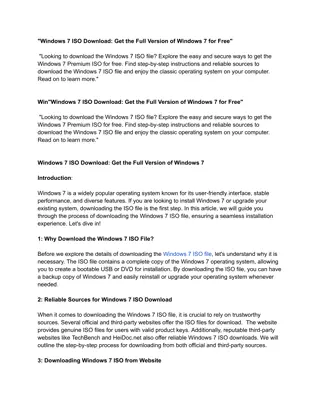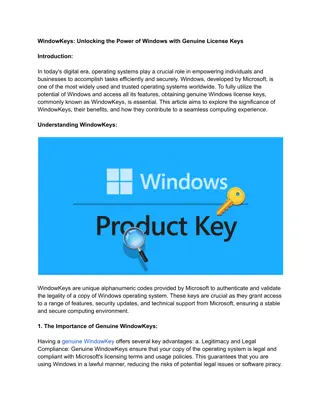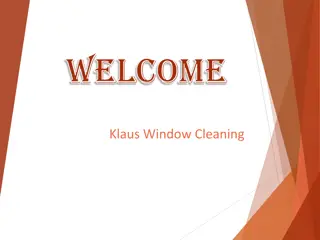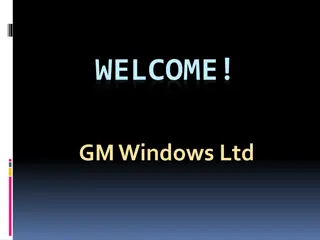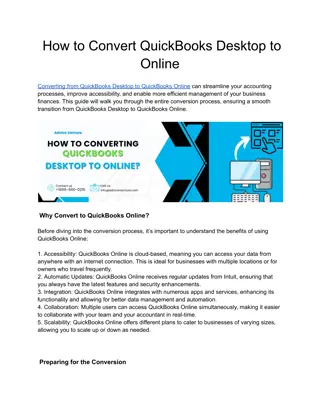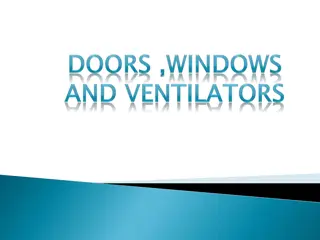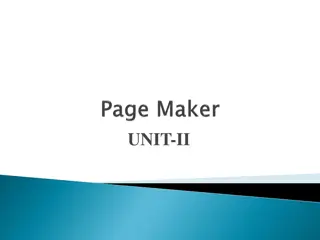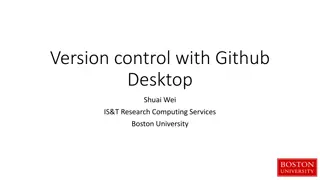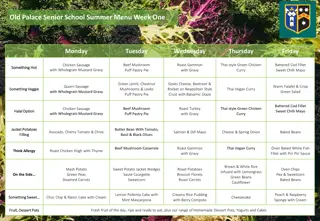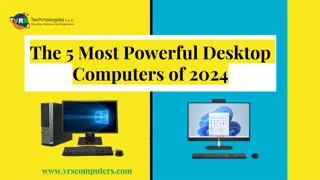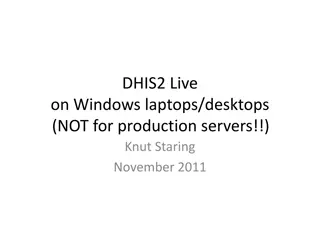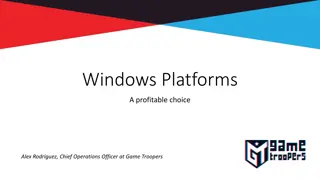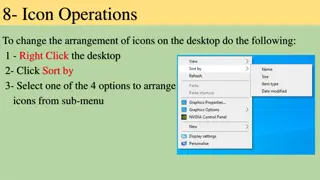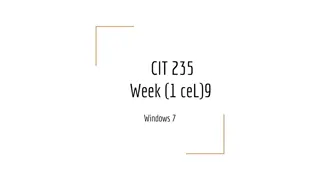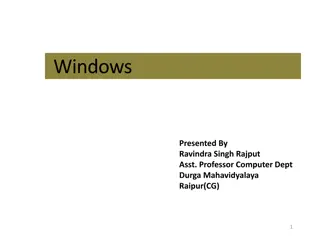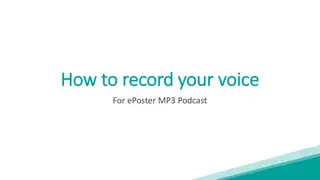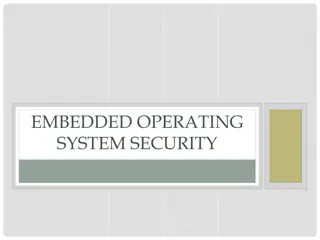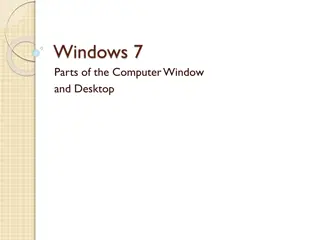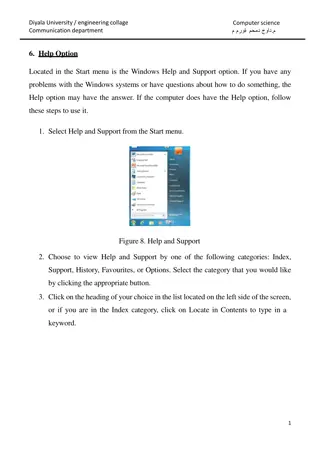Windows Desktop and Start Menu Tips
Learn how to efficiently manage your Windows desktop by changing icon arrangements, adjusting icon sizes, and utilizing the Start menu for various tasks. Discover helpful tips such as sorting icons, toggling Auto Arrange, and navigating the Start menu effectively, including options like starting programs, searching for files, and shutting down your computer easily.
Download Presentation

Please find below an Image/Link to download the presentation.
The content on the website is provided AS IS for your information and personal use only. It may not be sold, licensed, or shared on other websites without obtaining consent from the author. Download presentation by click this link. If you encounter any issues during the download, it is possible that the publisher has removed the file from their server.
E N D
Presentation Transcript
8- Icon Operations To change the arrangement of icons on the desktop do the following: 1 - Right Click the desktop 2- Click Sort by 3- Select one of the 4 options to arrange icons from sub-menu
View/Hide Icons 1. Right Click the desktop 2. Click View 3. Check to see ifAutoArrange has a check mark 1. If it does uncheck it.
Change Icon size 1.Right Click the desktop 2.Click View 3.Show the required size
Auto Arrange Icon 1. Right Click the desktop 2. Click View 3. Check to see ifAutoArrange has a check mark 1. If it does uncheck it
Start Menu Parts The Start menu for Windows 7 consists of many Parts, to show Use the Start menu to do these common activities 1.Start programs 2.Open commonly used folders 3.Search for files, folders, and programs 4.Adjust computer settings 5.Get help with the Windows operating system 6.Turn off the computer 7.Log off from Windows or switch to a different user account
At the bottom of the right pane is the Shutdown button. Click the Shutdown button to turn off your computer. Clicking the arrow next to the Shutdown button displays a menu with additional options for switching users, logging off, restarting, or shutting down.
Switch user: If you have more than one user account on your computer, Fast User Switching is an easy way for another person to log on to the computer without logging you off or closing your programs and files. Log off: When you log off from Windows, all of the programs you were using are closed, but the computer is not turned off. Lock: Locking your PC is a good option if you ll be back soon. You'll have to enter your password when you come back, which helps keep your work more secure.
Restart: The Restart button "reboots" your computer (it is sometimes called a "warm boot" or "soft boot.") That means it saves your information to the hard drive, turns off the computer for a moment, and then turns it back on again. Sleep: Clicking on Sleep puts your computer in a low-power state, but doesn't turn it off. The main advantage is that it allows you to get back to work quickly, without having to wait for the computer to do a full reboot.
Parts of a window 1- Title bar. Displays the name of the document and program (or the folder name if you're working in a folder). 2- Minimize, Maximize, and Close buttons. These buttons hide the window, enlarge it to fill the whole screen, and close it, respectively
3- Menu bar. Contains items that you can click to make choices in a program. 4- Scroll bar. Let s you scroll the contents of the window to see information that is currently out of view. 5- Borders and corners. You can drag these with your mouse pointer to change the size of the window.

